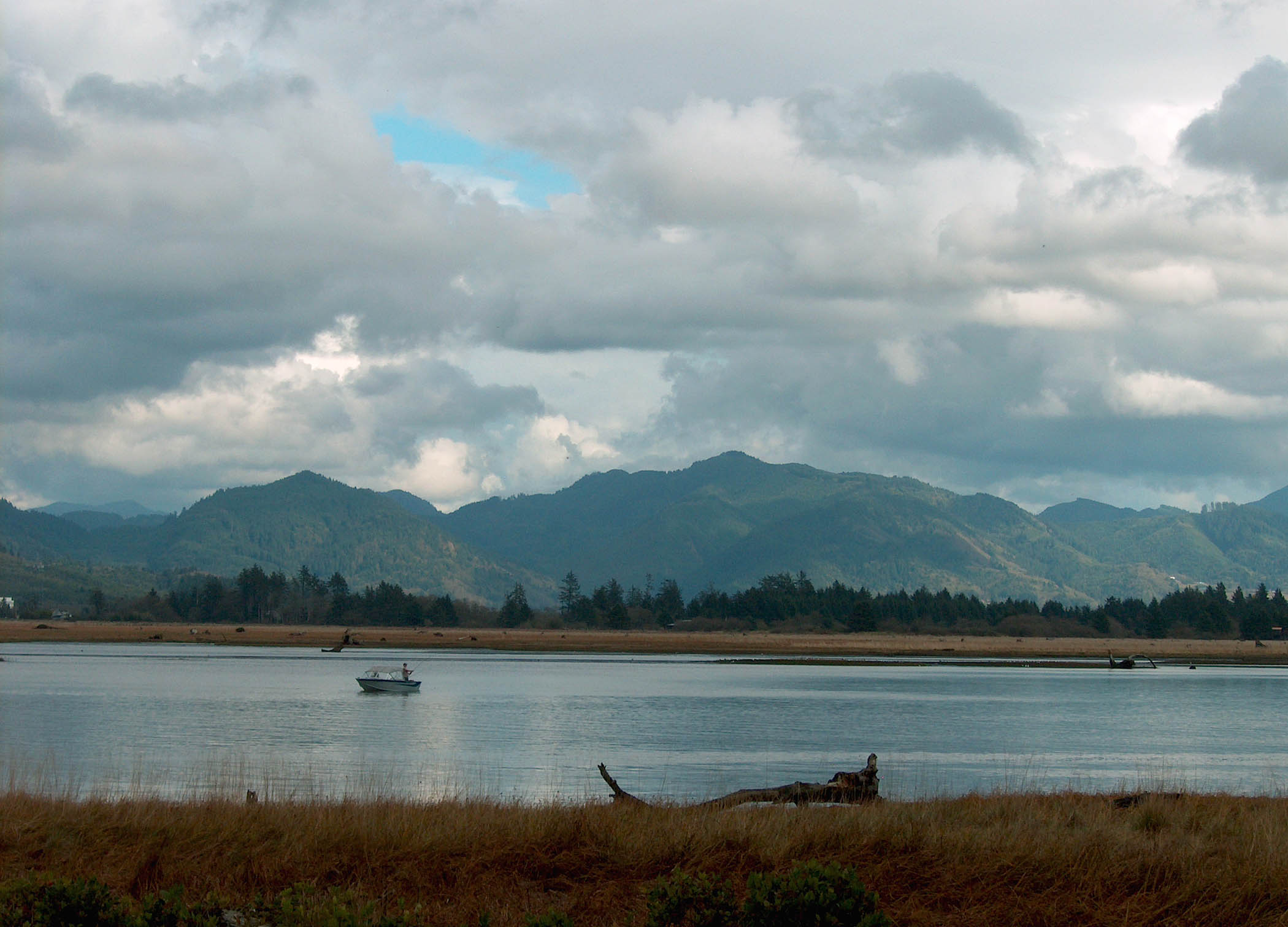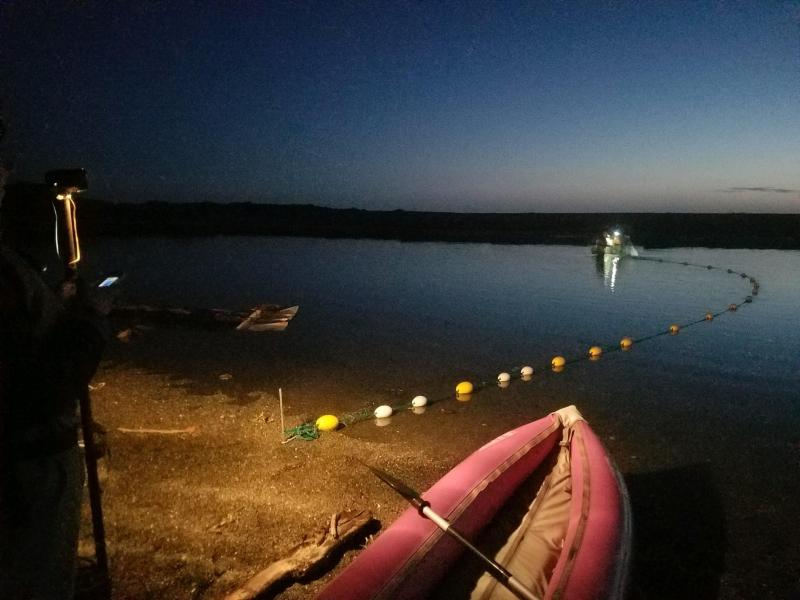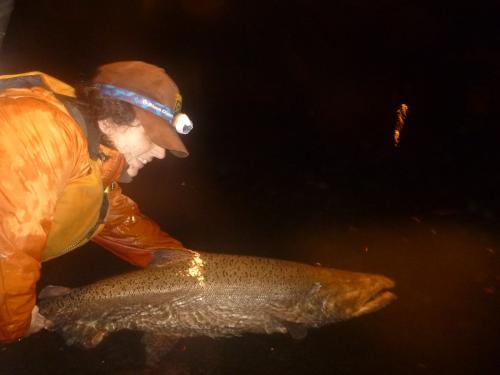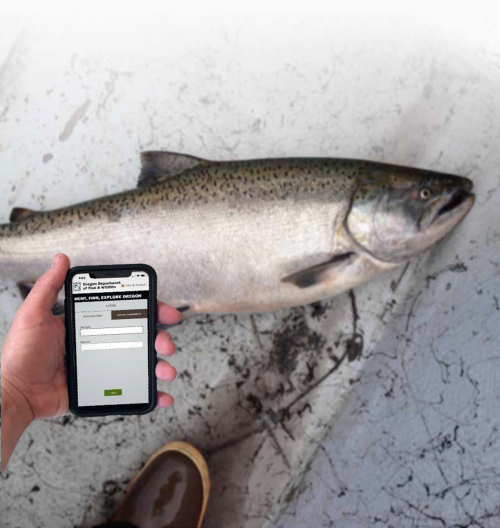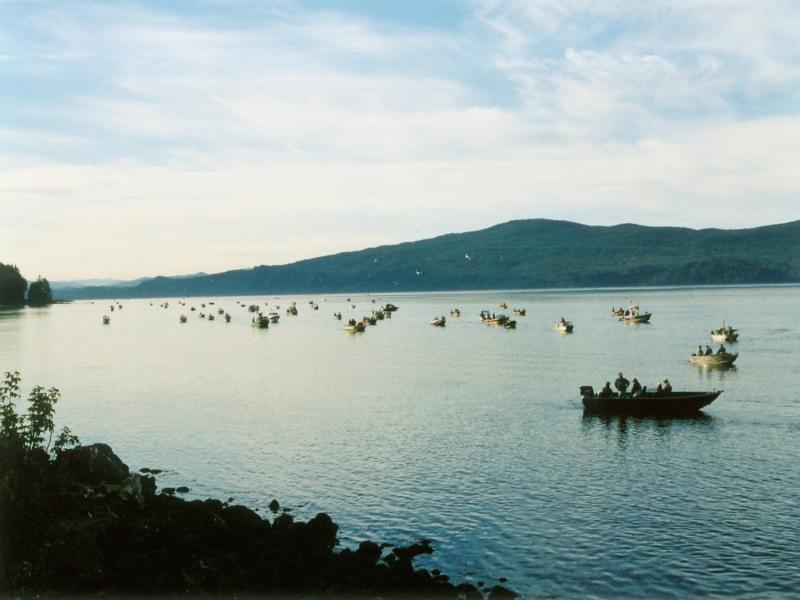Our Research
Mark-recapture studies have formed the backbone of much of what CCRMP does. They serve as the best way to generate run-size (or escapement) estimates but are extremely time consuming and expensive studies to conduct. Mark-recapture studies involve catching fish at a certain point in a river, marking them in some way (usually with a fin clip or visible tag or opercle punch), then releasing and encountering them again at another point along the river later in the season. By comparing the proportion of marked fish encountered in the second event to the number marked in the first event, we can get a good estimate of the overall size of the population.
In an effort to be able to generate escapement estimates every season without the need for a mark–recapture study, CCRMP embarked on an ambitious project in 1998 with a pilot study on the South Coos River, the first adult Chinook Salmon mark–recapture studies to be conducted in Oregon. Fish were captured, marked, and released when fish moved into the system at night (to avoid competing for fish with recreational anglers), and later in the season spawning ground surveys were conducted on the upper reaches of the river. This formed our second capture event, and also served to give us enough information to determine a correlating factor that allowed us to generate an expansion estimate.
Over the next two decades, we conducted a series of these mark–recapture studies across the Pacific Salmon Treaty indicator basins and other major Chinook Salmon producing rivers in Oregon. The methods were studied carefully to remove bias from our studies, allowing us to be confident in generating unbiased, high-quality escapement estimates solely from our spawning ground surveys. These run-size estimates are the core of what we do here at CCRMP.
In December 2018, the Oregon Department of Fish and Wildlife (ODFW) implemented an Electronic Licensing System (ELS) to effectively administer licenses and harvest tags, reduce operating costs, and enhance regulatory enforcement. Prior to this time, estimates of Oregon’s Chinook Salmon harvest were derived solely through voluntarily returned paper tags at the end of each season, supplemented by some traditional creel surveys when funding allowed. While anglers may still choose to use paper harvest tags, ELS allows for instantaneous and compulsory harvest reporting, and the subsequent opportunity to explore innovative new methods for estimating salmon harvest. One such method is an e-Creel.
In 2019, ODFW’s Coastal Chinook Research and Monitoring Program (CCRMP) conducted a post-hoc study comparing e-Creel harvest estimates to traditional creel estimates. Traditional roving-access creels were conducted in four coastal basins (Nehalem, Salmon, Siletz, and Elk) to estimate recreational harvest of fall Chinook Salmon.
An e-Creel is a novel method of conducting creel surveys that combines in-person interviews with harvest data reported through ELS. The e-Creel eliminates costly, complex, and labor-intensive effort counts, allowing for increased collection of scale samples from harvested Chinook that provide age estimates. In other words, the increased efficiency of the e-Creel enables CCRMP to interview a greater number of anglers which results in more precise age-specific harvest estimates. The ability to report annual estimates of age specific harvest by population supports management obligations for Oregon’s exploitation rate indicator stocks (ERIS) documented in the revised Chinook Chapter 3. of the PST. This method can derive precise, bias-free, cost-effective, and near real-time harvest estimates with a high degree of confidence. In addition, it allows the opportunity for CCRMP to gather information from anglers that managers may request related to harvest regulations’ impacts. Further, the e-Creel has been a useful tool in validating assumptions about ELS harvest estimates. One such assumption is the correct use of location tags necessary to identify the specific location a fish is tagged (marine ports or inland estuaries and rivers).
For more information on e-Creel methodologies, see Riggers and Jones 2022.
CCRMP began conducting e-Creels in place of traditional creels in 2020.
In 2023 we began an e-Creel validation study on several basins on the North Oregon Coast. The purpose of this study is to help determine the validity of using the e-Creel data we gather on an annual basis to develop an expansion factor that can be applied to any basin on the coast (In other words, determine if a calibrated index approach can be used to derive precise harvest estimates from basins in which e-Creels are not conducted). The expansion factor is a value derived from the ratio of e-tagged to total tags (e-tags and paper tags) seen across our regularly studied basins. This would then allow us to generate high-quality estimates of harvest on any basin coastwide with only a small increase in analytical effort. These estimates could then be used in any number of scientific or management applications.
To test this, we are conducting e-Creel studies on three basins (the Nestucca, Yaquina, and Alsea) that we don’t routinely survey. We can then compare the data we collect through these studies to an estimate generated from ELS data via our expansion factor. This study will also help us test some of our assumptions regarding ELS and e-Creel.
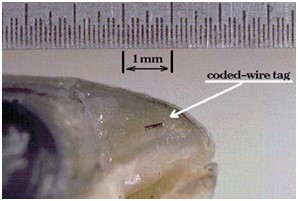
Coded wire tag (CWT) programs are used across Oregon to help us gain critical information about salmon harvest in the ocean, and how many fish from a population might return to spawn (escapement). These programs form a critical part of both research and monitoring of salmon stocks in Oregon. So, what is a coded wire tag?
CWTs are small lengths of metal wire that are inserted into the snouts of young fish, usually (although not always) as part of a hatchery program. Each bit of wire is printed with a code that tells us the basin and year that a given fish originates from. The fish then go out into the ocean and grow to full size. Many of these salmon will be harvested in Washington, Canada, or fisheries in Alaska, all of which scan the fish for CWTs, and collect the snouts of tagged fish. The tags are retrieved and read, and the results shared among the participating agencies. We then collect snouts from our in-river creel and spawning ground surveys, and so get an idea of how many fish were harvested in the river and ocean; we call this the exploitation rate.
Coded wire tags can also be used for research. In 2012, wild fish were captured on the Salmon River and implanted with tags, as well as fish produced at the hatchery. These fish were recovered between 2012 and 2016, and we were able to compare differences between hatchery and wild produced fish. This was similar to an earlier study conducted on the Siuslaw River in 2002. See our publications page in the future for more information about these two studies.
While most of our focused research deals with technical aspects of Chinook Salmon runs on the Oregon Coast, we also assist with and participate in projects for other research groups as well.
We recently helped collect tissue samples – fin clips – for DNA analysis by the State Fisheries Genomics Lab for returning Chinook Salmon on the Umpqua River and for broodstock used at the Elk River Hatchery.
While conducting creel surveys, we also conduct human dimensions research, obtaining valuable data to help ODFW's District Biologists understand how people interact with the fisheries and regulations in their management areas.
CCRMP also collects vital information pertaining to Coho Salmon when harvest is allowed through e-Creels and spawning ground surveys.
